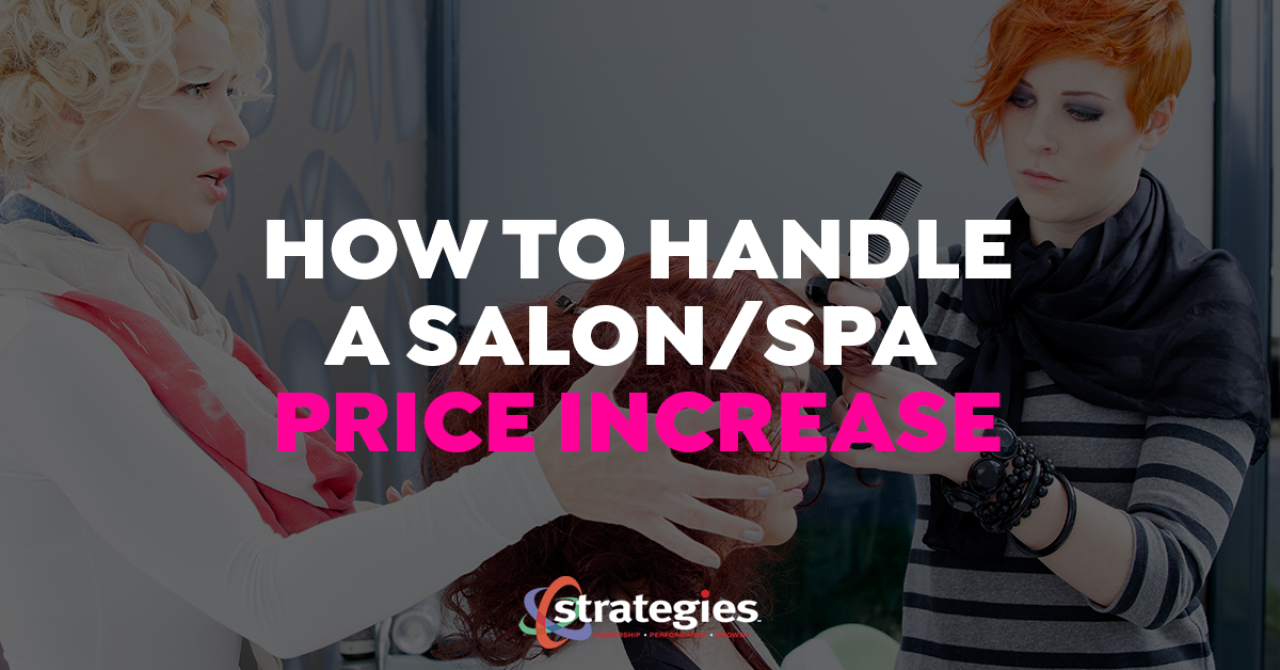How to Handle a Price Salon or Spa Increase

But for the majority of business owners and leaders, increasing prices on goods and services can be an emotional ride through "what if's" on everything from negative client reaction to protecting your precious profit margins. The truth of the matter is, there is nothing nonchalant about figuring out if your current pricing strategy has reached the end of its lifespan, how much of an increase the market will bear, and just how and when to implement a price increase.
Here are some no-compromise insights on the inner workings of price increases:
- Insights on retail pricing: Retail is a seemingly easy area to set pricing because the basic formula is based on a desired profit margin. Buy it for $20 and sell it for $40 … that’s a 50% profit margin. If the manufacturer raises the price to $22, you raise your selling price to $44, and so on. But if you can keep your overhead costs low, you can undersell your competitors by holding the old price and profit on volume. And if you have more exclusive products and the right clientele, you can increase your margins even higher without a care in the world. Insight: Don’t get stuck in the wholesale mentality that the cost and standard profit margins are the final formula.
- Insights on service pricing: This is where pricing strategy really gets interesting. Where retail has a product cost, service has a labor cost. But labor cost is a moving target – a low productivity rate drives up costs while a high productivity rate lowers costs. Services also require products, materials, or equipment. How well are you managing those costs? Don’t blame the manufacturer’s price increase for your profit woes if your productivity rate, client retention rates, and pre-book rates are really the problem. Insight: Service pricing should always be based on your company’s “cost per hour” for each hour it sells. Once you know your cost per hour, you can apply a desired profit margin - just like with retail. Contact Strategies if you want some coaching on calculating your company’s cost per hour.
- Your price may already be right: It’s always easy to play the price increase card when cash is tight and profit is screaming at you to do something. But as I stated earlier, there are forces at play that can leak cash and sap profit. If your payroll is too high and productivity too low - that’s where your problem is. Maybe those high commission rates are killing you and you’re afraid to step into the dicey process of installing a new pay system. And if you raise prices on commission - service providers get an automatic raise when it’s the business that truly needs financial relief. Low productivity rates are also a profit killer. A price increase in a business running as fast as a turtle doesn’t make sense. Insight: Before you play the price increase card, take a hard look at your systems and critical numbers. Get your company moving in the right direction before messing with price increases. You raise prices when you’re fast and strong.
- Just do it: Some businesses raise prices every year or two. That’s their company’s rhythm and if it works well, they keep doing it. Other businesses agonize over how and when to increase prices. They want to give customers plenty of advanced notice. They want to hang signs announcing the price increase so the poor sign can be the bad guy and not them. You buy from companies and businesses that raise their prices all the time. They don’t beg for forgiveness or apologize - they just raise their prices. All it takes is a simple, “We had a price increase so we can continue to deliver the great service you expect.” Insight: Just do the price increase if that’s what your company needs. No signs. No months of advanced warning. You work hard. You’ve earned it. Your financial reality says you have to. Just do it.
- Worst tactic ever: Trying to compete on price alone is just plain nuts. Competing on price kills your brand. If the cheapest price is all you've got, you've got nothing. Same goes for Groupon. Groupons wreck cash flow.
Relationships: We all love our loyal customers. They’ve been with our companies for years. They believe in us. We appreciate them. They even feel like family. But these wonderful people are still our customers. They buy our services and products because we’re the best at what we do. Insight: Don’t let relationships cloud your business thinking. Your most loyal customers may feel offended that you are charging them more, but this is business. They know that, and they will support you. Always keep it about business.
Comments
No comments found. Start the conversation!
Leave a Comment